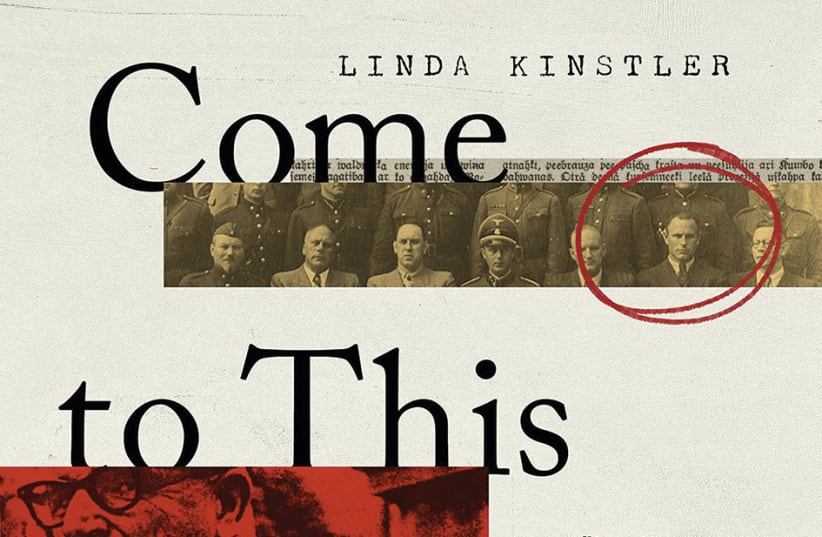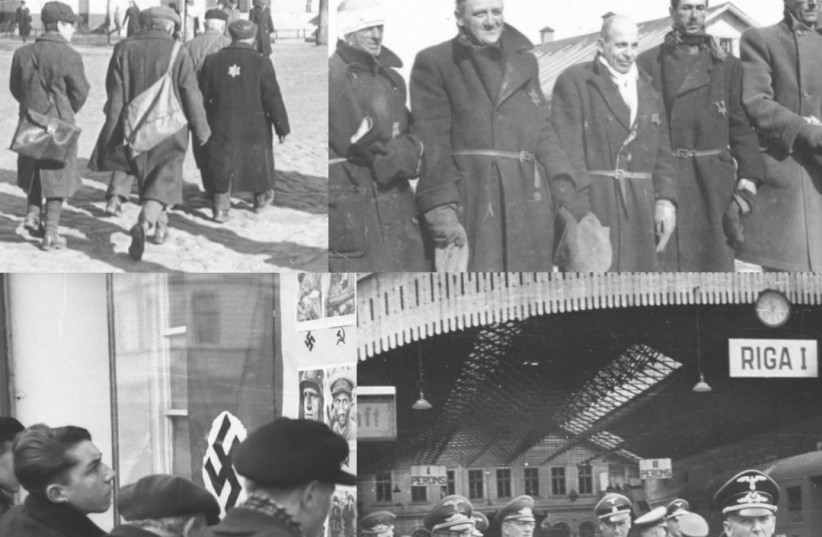Come to This Court & Cry: How the Holocaust Ends is a book with ostensibly excellent potential. For starters, the author has a highly unusual family history. Her paternal grandfather was a member of one of the worst murder squads in the history of the Holocaust, the Latvian Arajs Kommando, whose men murdered tens of thousands of Latvian and Belarusian Jews, and her maternal grandparents were Soviet Jews, many of whose family members were murdered in the Holocaust in Ukraine. And if that is not a strange enough family constellation, her story is further complicated by her Arajs Kommando grandfather switching sides at some point and becoming an informer for the NKVD (Soviet Secret Police), who identified his former comrades to the Soviet authorities, so that they could be prosecuted.
If, however, one is looking with anticipation to read about the obviously problematic interaction between relatives from such diverse backgrounds, they will be deeply disappointed. The author writes sparingly about her Jewish mother and her family, about whose survival in the Holocaust we learn virtually nothing.
The focus of the book: Arjas Kommando
It is her Arajs Kommando grandfather, Boris Kinstler, who is the primary subject of her investigation and fascination. The problem in his case, however, is that there is insufficient evidence of any sort to be able to fully verify his role in the Kommando, exactly when he became a spy for the Soviets, as well as his suspicious disappearance in 1949 in the course of a “routine business trip” to Estonia.
Stymied and frustrated by the impasse in her research, she switched her focus to the 1965 execution by the Mossad in Uruguay of Herberts Cukurs, who had served in a prominent role in the Kommando. Prior to World War II, Cukurs was a famous aviator, who built his own plane and flew to distant destinations, such as Gambia, Japan and even Palestine, thereby achieving status as a national hero. In fact, upon his return to Riga from the last destination, he delivered a lecture on his trip to the local Jewish community.
During World War II, Cukurs served as a weapons officer in the Arajs Kommando, which was the most important local unit participating actively in the mass murder of Latvian Jewry, both in Riga and in the provinces. Half of the unit was later sent to Minsk to continue their murderous activities.
After the Holocaust, Cukurs fled with his family and a Jewish girl whom he had rescued to Brazil, where he opened a tourism business, and made no effort to hide his identity. When his presence in Brazil was discovered, the Soviet authorities requested his extradition. The Brazilian government refused the request on the grounds that they would only extradite him to Latvia, the country where he committed his crimes. Since Latvia no longer existed as an independent country (it was a Soviet republic), Cukurs was at least temporarily spared prosecution for his crimes.
To further complicate the efforts to hold Cukers accountable, Germany was considering the application of its statute of limitations on murder to Holocaust crimes as well, a decision that Israel sought to prevent. Under these circumstances, the Mossad decided to eliminate Cukurs, in the hope that his execution would convince the Germans to abandon any attempt to limit the prosecution of Nazi criminals. The operation was carried out in Montevideo, since Brazil had capital punishment for murder, but that was not the case in Uruguay.
Prior to Cukurs’ execution, numerous testimonies regarding his role in the mass murder of Latvian Jews had already been collected from Jewish survivors in Displaced Persons camps in Germany, in the immediate aftermath of World War II. In that respect, his hero status in Latvia made him much more easily recognizable and remembered, but his execution also created a serious problem, once Latvia became independent again in 1990. That Cukurs’ guilt had not been established in a court created an opportunity for right-wing nationalists to attempt to restore him to hero status. After all, how many genuine heroes did little Latvia have?
In addition, Cukurs’ family appealed to the Latvian procurator-general to rehabilitate him and officially establish his innocence. In the same spirit, a musical about his life was staged in various cities in Latvia that presented his life in a very positive manner, with scant mention of his wartime activities.
The glorification of Holocaust perpetrators in post-Communist Eastern Europe is very prevalent to this day throughout the region, in the wake of the transition of former Soviet republics and Communist regimes to democracy, but Kinstler does not deal with it as a regional phenomenon. She sticks to Latvia, and relates to these issues in a surprisingly neutral manner, as if the Mossad operation, which she rather harshly critiques, makes condemnation of Cukurs very questionable. (His commander, Viktor Arajs, was convicted and punished by a German court in 1979.) Add to this a few mistakes regarding historical Jewish/Holocaust issues in Latvia – the number of Jews deported to Latvia from the Reich was 25,749, not 10,000; the mass murders at Rumbula took place on two days, November 30 and December 7, not for several weeks; and there were 40 synagogues in Riga before World War II – and one is left with the impression that she finds it difficult to identify with the victims and is simply unable to condemn her grandfather’s service in the Arajs Kommando.
Kinstler deserves credit for her meticulous research on the Cukurs case, and for raising important questions regarding the gap between historical research and convictions by courts. Yet many readers will be extremely upset by her refusal to unequivocally condemn Cukurs’ role in the Arajs Kommando, as long as he has not been convicted by judges in a court of law. As someone who researched his service in that unit, and in order to prevent Cukurs’ rehabilitation, submitted testimonies of Jewish survivors of Riga to the Latvian Procurator-General, I heartily agree with those sentiments.
And in conclusion, I do not agree with part of her title. The manner in which the Cukurs case ended, does not symbolize “How the Holocaust ends.” The events of the Holocaust ended 77 years ago, but we are still dealing with its implications, in courts, in classrooms, and in the public arena. The Cukurs case, in which a just punishment was meted out in an extrajudicial manner, was totally atypical. ■
Dr. Efraim Zuroff is director of the Simon Wiesenthal Center-Israel office and Eastern European Affairs.
Come to This Court & Cry: How the Holocaust EndsLinda KinstlerBloomsbury Circus, London and Dublin, 202220 British pounds/$29

